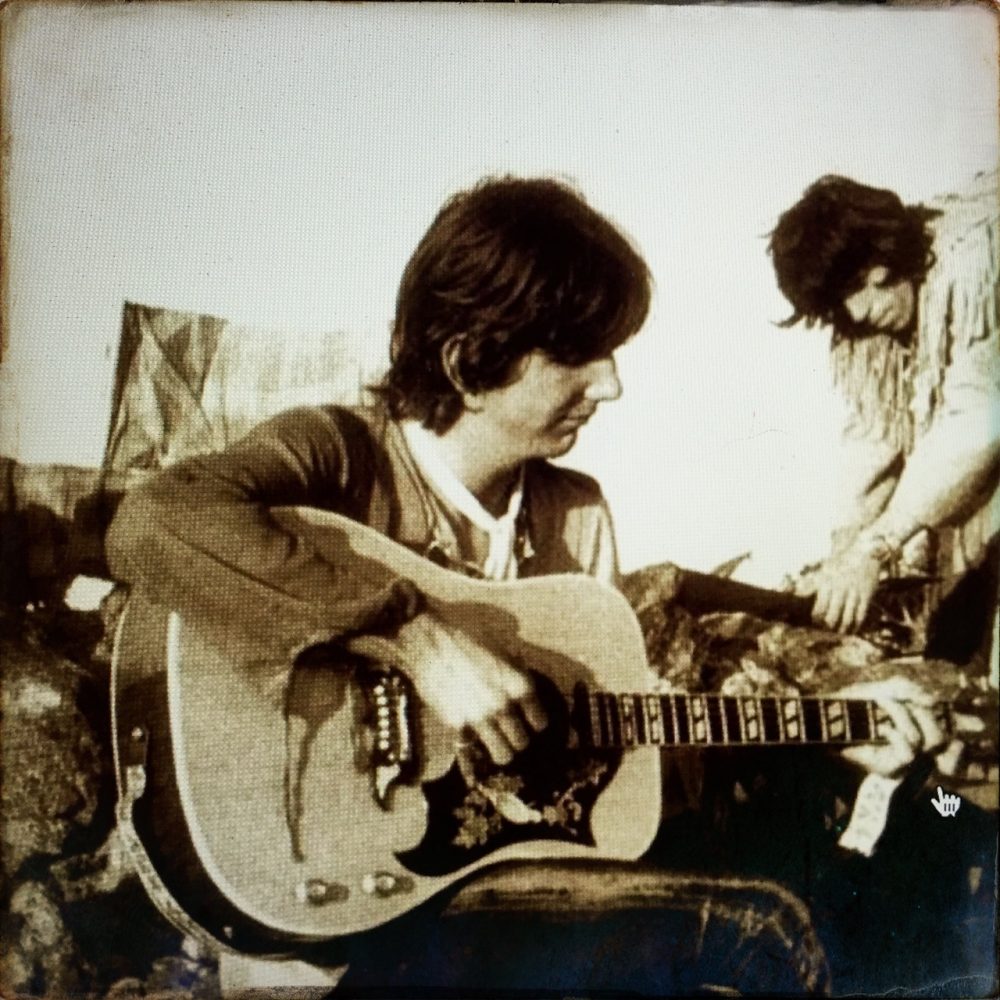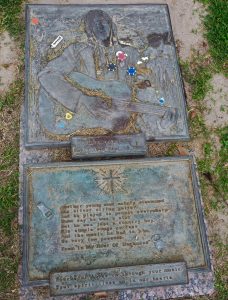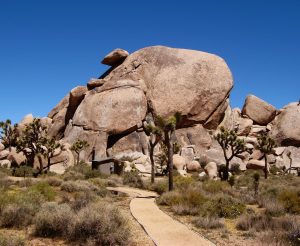
31 May Brother Gram: A Pilgrimage in Two Parts
Your Humble Narrator has finally returned home to Santa Fe after an extended sojourn in the magical and misbegotten town of his birth, New Orleans of Louisiana. It was a productive trip for which the skyways were forsaken for the byways—specifically, an exhausting 17-hour drive, the primary feature of which was the state of Texas, which, through some woeful miscalculation or oversight, has been rudely placed betwixt and between the states of my procreation and primary residence. Be that as it may, one highlight of my time in New Orleans was a long-considered but oft-delayed pilgrimage to the gravesite of one of my primary musical heroes, Cecil Ingram Connor III, better known as Gram Parsons.
Gram was never a New Orleanian but he had some strong connections to the city. His adoptive father was a rather shady New Orleans businessman (is there any other kind?) by the name of Robert Ellis Parsons. Parsons moved the family to New Orleans from Florida following the death of Gram’s mother in 1965. The Parsons home was on St. Charles Avenue somewhere Uptown near the park (exact location unknown) and this was where Gram married Gretchen Burrell in 1971. The circumstances surrounding Gram’s untimely death in 1973 have long been the stuff of legend: An overdose at the Joshua Tree Inn on September 19, the theft of his corpse (by road manager Phil Kaufman and a friend) from a loading dock at LAX airport the following day, and, subsequently, its partial immolation at Cap Rock in Joshua Tree National Park. The theft of Gram’s corpse resulted from a request that he had made to Kaufman at the funeral of guitarist Clarence White earlier in the year and the episode became the subject of a 2003 film titled Grand Theft Parsons starring Johnny Knoxville as Kaufman.
Joshua Tree might be considered as the spiritual resting place of Gram Parsons but Kaufman and his co-body snatcher did a less than thorough job with their illicit cremation: The five gallons of gasoline they poured into the coffin apparently produced an impressive fireball but not much actual burning. There are probably some of Gram’s ashes mixed into the sand at Cap Rock but the remainder of his remains were retrieved and transported to New Orleans as originally intended by Robert Parsons. (It apparently served Parsons’ interests to have Gram’s remains interred in Louisiana as the state’s inheritance laws, based upon Napoleonic Code, specify that, in lieu of a will providing otherwise, Gram’s estate would pass to his eldest living male relative. Having Gram’s official burial site in Louisiana would strengthen Parsons’ claim.) Gram’s ‘official’ funeral was held on September 25, 1973, at the Bultman Family Funeral Home on St. Charles Avenue, just a few blocks from YHN’s familial home.
On Saturday, May 28, YHN set out to visit Gram’s Louisiana grave site. Somewhere along the line I had acquired the mistaken notion that the grave was at Metairie Cemetery just off Interstate 10, which, despite its name, is actually located in Orleans Parish and not in Metairie proper which is part of adjacent Jefferson Parish. Established in 1872, Metairie Cemetery is the picturesque resting place of notable locals such as Jim Garrison, General P.G.T. Beauregard, Al Hirt, baseball Hall of Famer Mel Ott, and the great Louis Prima. I had never been to Metairie Cemetery before and though my visit was misguided and fruitless, I did appreciate the chance to wander amongst the stately monuments erected there in memory of the city’s many illustrious and notorious residents. Be that as it may, Brother Gram is not buried at Metairie Cemetery, but rather at a cemetery in Metairie. After an hour or so of frustrated wandering I realized my mistake and established that the correct location was several miles away at the Garden of Memories in deepest, darkest Metairie (located, appropriately enough, on Highway 61). For many years Gram’s grave was unremarkable in the extreme—just a round metal marker set in the grass—but in recent years that has been replaced with two bronze plaques bearing a bas relief portrait of Gram playing a guitar and a verse from his song In My Hour of Darkness. There is a tree and a bench nearby for visitors to take advantage of a bit of welcome shade to contemplate Brother Gram’s monument. The Garden of Memories may not be as distinguished as Metairie Cemetery but the spot is relatively peaceful and the traffic noise from Highway 61 is not nearly as overwhelming as the ceaseless roar of I-10. Gram’s marker was rather unkempt and a small assortment of tokens from fans were scattered about the plaques: poker chips, lighters, bottle openers and guitar picks. I brushed away some of the dead grass clippings and sat for a while and thought about all that Gram had meant to me over the years.
In April of 2008 I had the opportunity to visit Gram’s alternate resting place at Joshua Tree National Park. At 1,234 square miles Joshua Tree is vast (about the size of Rhode Island) but still only ranks 15th in terms of the largest national parks in the U.S. Gram spent a lot of time wandering the park back in the late ’60s and early ’70s when he was living in Los Angeles and its particular brand of austere high desert beauty obviously spoke to him in much the same way it speaks to me (the picture at the top of this post shows Gram and Keith Richards in Joshua Tree back in 1969). There is no highway noise, just the wind, lizards rustling about in the brush, and the birds. In April the wildflowers bloom in great and colorful profusion and the weather is clear and warm during the days and cool at night. Cap Rock is not the easiest spot to find and as it is not notable as a rock climbing destination a fair number of the visitors are those coming to pay their respects to Gram. Makeshift memorials are frequently left at the base of the boulders where Gram’s body was burnt but park service employees regularly come to clear them away. When I arrived they had just finished up cleaning the area and there was nothing to indicate the precise spot where Phil Kaufman had drunkenly attempted to fulfill his friend’s request. Regardless, I had my ‘moment’ and thanked Gram for everything that he gave us.
So, a mildly shabby cemetery west of New Orleans and a remote pile of giant boulders in the desert of southern California—two spots that could scarcely be more different. Depending on how you look at it, either one or the other or both or neither is home to the soul and mortal remains of Gram Parsons. It took me a while but I finally made my pilgrimage to both spots and I now feel that I have done my due diligence. Brother Gram lived fast and died young—too young, no doubt—but despite his brief time with us his legacy lives on from the southern swamps to the high desert and everywhere in between and beyond.



